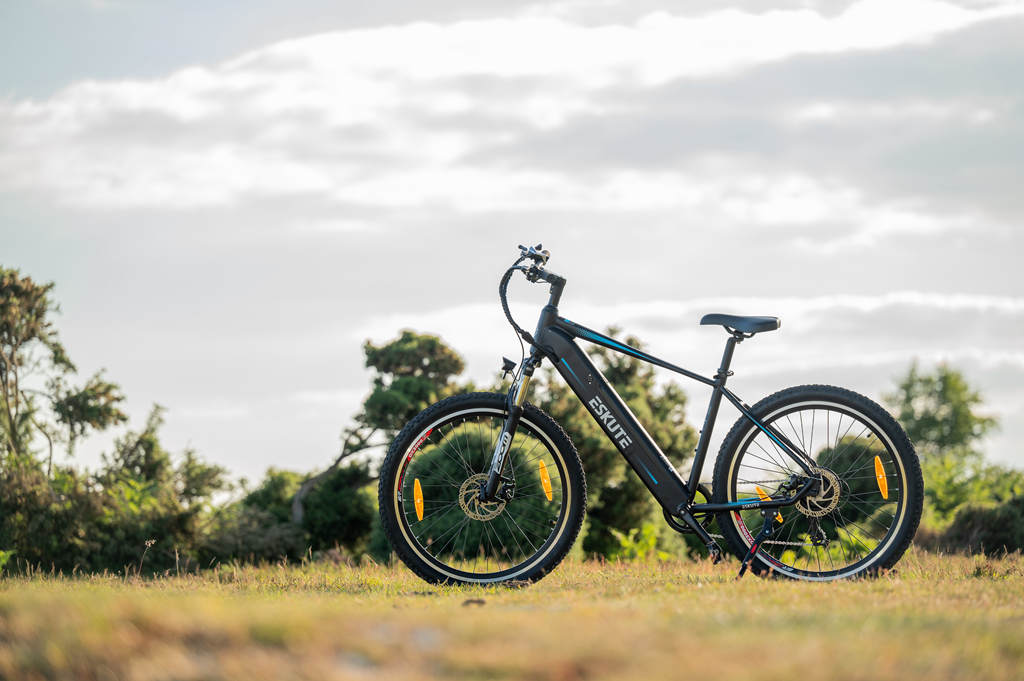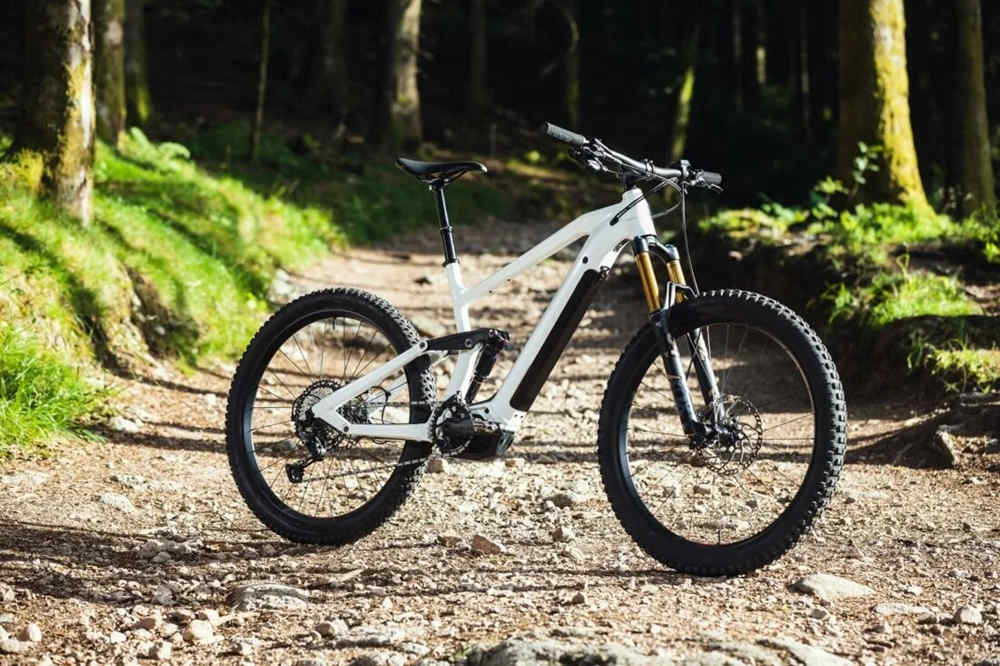Navigation
For centuries, bikes have come with options for brakes that take the rider's needs into account. Traditional rim brakes were standard until recent decades; however, disc brakes are now popular. But what is it that sets them apart from each other?
Disc brakes and rim brakes both have their advantages and disadvantages. Choosing either of these technologies depends mostly on your preferences and riding style. To help make up your mind, we will compare the two brake types - disc brake vs. rim brake. Let's find out if there are any key differences between them!
What is a Disc brake?
Disc brakes are characterized by their extreme stopping power. A disc brake system consists of a brake disc, a brake calliper, and brake pads. You'll most commonly find the hydraulic and mechanical disc brake variations.
Although disc brakes are heavier than rim brakes, riders don't have to apply too much force before the bike fully stops. Disc brakes are considered the best option for mountain bikes because they are resistant to mud, water, and debris.
Advantages of Disc Brakes
- Disc brakes provide excellent stopping power, particularly in rainy conditions.
- This brake system is resistant to mud and grime when riding, which is beneficial to all off-road bikers.
- Disc brakes prolong your rim's lifespan. Since disc brakes don't make contact with the rim, you won't need to replace the rims because of brake pad wear.
- Because there is no braking surface on the rims, disc brakes allow for the use of more aerodynamic wheels and rims for quicker riding performance.
- Disc brakes afford riders the benefit of altering their rotor size.
Disadvantages of Disc Brakes
- Disc brakes cost more than rim brakes.
- They weigh more than rim brakes. Disc brake frames are heavier because they are strengthened to resist the braking power of disc brakes.
- Typically, rim brakes offer better modulation. Rim brakes often have more modulation, whereas disc brakes have more power.
- Disc brakes can become noisy, which may be due to oil or grease contamination. You should change the pads and clean the disc brake rotor to solve this issue.
What is a Rim Brake?
Rim brakes function by using the rim of the bike's wheel as the braking surface. These brakes are controlled by hand levers connected to the brake by a cable. The cable moves the brakes and two pads when the rider pulls on the handle, pushing them up against the rim.
Rim brakes' lighter weight is one of their biggest advantages over disc brakes. The difference is noticeable during rides because the braking system is smaller and composed of lighter materials. Rim brakes have been the standard system for many years, are available in different designs, and can benefit various types of riders.
Advantages of Rim Brakes
- Rim brakes are lightweight. Weight is the biggest advantage that rim brakes have over disc brakes.
- Rim brakes are easier to maintain and repair. If there is an issue, all you need is a multi-tool to disassemble the brake. Rim brakes also make troubleshooting simpler because the callipers are entirely accessible. You don't need specialized equipment or expertise to fix your bikes; check YouTube, and you're set to go.
- Rim brakes are less expensive. If you're on a stricter budget, rim brakes are the best option you can get. Rim brakes have fewer moving parts, which reduces manufacturing costs.
- Rim brake pads are further away from the braking surface, preventing rim brakes from rubbing. As a result, they are less prone to wear.
- Rim brakes offer excellent aerodynamics when riding; the callipers and rotors on rim brakes don't protrude to the side and cause drag. Rim brakes give you a minor aerodynamic edge on flat and downhill trails.
Disadvantages of Rim Brakes
- Disc brakes offer greater stopping power than rim brakes; rim brakes do not provide the same mechanical advantage.
- Rainy weather makes rim brakes less effective because wet brake pads and rims become slippery. Water lessens resistance between the brake pads and rims. As a result, the brakes' stopping power is decreased, which could pose a safety risk.
- Rim brakes are less precise than disc brakes. You can't precisely manage how much brake pressure you apply with rim brakes. That is because of the leverage the levers produce.
- Rim brakes are going out of fashion. Bike manufacturers are slowly moving away from rim brakes. Therefore, using disc brakes can future-proof your bike.
Differences between disc brakes and rim brakes
Disc brakes and rim brakes have a few significant differences. Here, we'll discuss five major differences.
- Performance
Disc brakes are universally acknowledged to be more powerful and responsive than rim brakes. This is possibly the main factor in cyclists' widespread transition to disc brakes. Disc brakes are more dependable, responsive, and predictable because wet weather has a lesser impact on their performance.
2.Weight
The entire weight of a bike with disc brakes typically increases by about 200 to 300 grams, with parts such as the levers, brake callipers, hoses, fluid, and rotors being heavier than with rim brakes. Additionally, while less material is used to make the rim, a little more weight is added to the spokes and hub due to modifications made to accommodate the disc and endure the torque generated by pedalling and braking. In short, electric bikes with disc brakes ride heavier.
3.Handling
Disc brake wheels are mounted to the bike frame with a rod called the thru-axle. Compared to rim brake frames, this makes the frame more rigid. The disc brake version of an equivalent rim brake bike will feel harder or stiffer, but it will also transfer power more effectively.
4.Cost
Road bikes with disc brakes cost more than those with rim brakes. Due to the extra braking power needed, the frame of the disc brakes needs to be slightly more engineered, making the parts more expensive.
5.Maintenance
The bulk of bikers will need some professional help to service disc brakes. Rim brakes are straightforward; therefore, issues are typically simple to fix. Disc brakes are more complicated, and adjusting and purging the brakes involves more knowledge and equipment, which may require a trip to the repair shop.
Why Disc brakes are better than Rim brakes

Disc brakes come with an adjustable modulation level, allowing riders to apply braking pressure precisely, the same as using the brakes in a car. You can do it gradually as you get closer to a stop sign or abruptly if something suddenly appears on the trail.
Compared to rim brakes, disc brakes produce more stopping power for tricky, steep descents and cycling races. In addition to being powerful, disc brakes are excellent for younger and more experienced riders because they require less force to be applied at the lever.
Disc brakes work effectively in all types of weather, including snow, rain, and mud. Rim brakes, on the other hand, might be unreliable in varying weather conditions. This unreliability leaves riders in the awkward position of not knowing how or when to apply their brakes.
That is one of the main factors influencing riders' decisions to use disc brakes rather than rim brakes, particularly in wet weather.
Because disc brakes allow for bigger rims and higher tire clearance, off-road riders absolutely love them. There is more space for the wheel because there is no brake calliper to obstruct it. Some bikes with disc brake systems can take up to 38mm wide tires.
Conclusion
Rim brakes work perfectly for most casual riders, as they are affordable, dependable, and easy to maintain. There is no need to upgrade to a disc braking system if your rim brakes provide sufficient stopping power for your needs.
However, if you prefer riding on more challenging terrain, you may need the superior braking performance that disc brakes offer. Disc brakes are also the present and future, so investing in them is probably a good idea. So, take your pick! Also, don't forget to browse through our impressive bikes and accessories collection.












Leave a comment
This site is protected by hCaptcha and the hCaptcha Privacy Policy and Terms of Service apply.